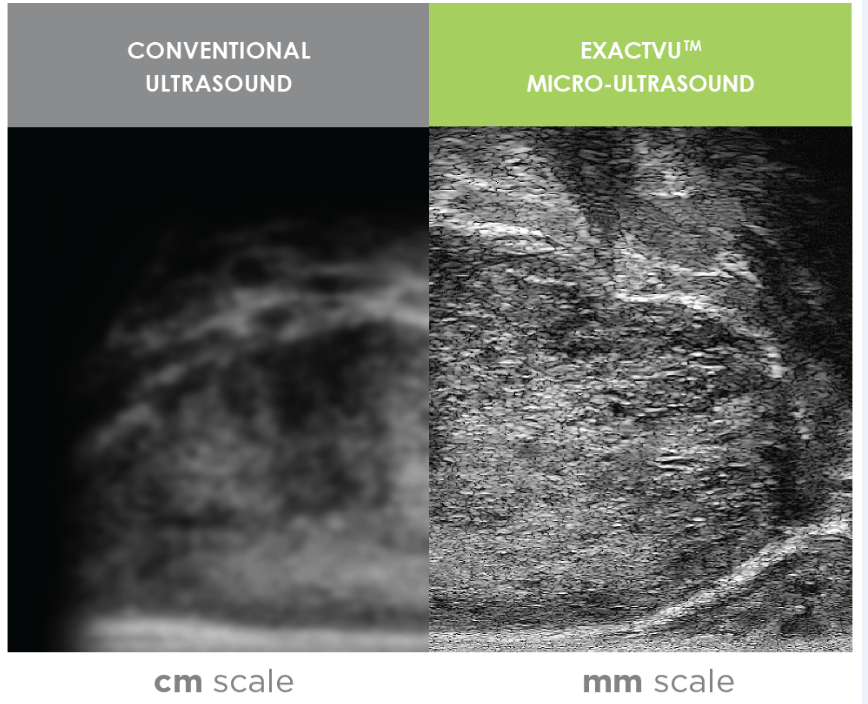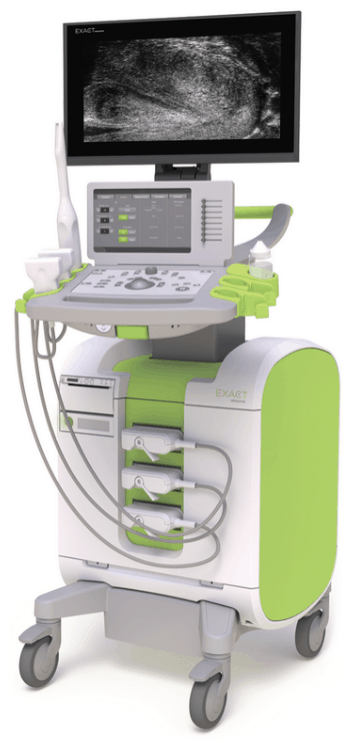AI and micro-ultrasound team up to tackle prostate cancer
A new advanced ultrasound imaging technique is being combined with artificial intelligence to improve the detection of prostate cancer.

Prostate cancer is the second most common cause of cancer death in men in both the USA and the UK. The current standard-of-care ultrasound, which guides prostatic needle biopsies that help to diagnose prostate cancer, yields a 30 per cent false negative rate as the resolution of the ultrasound systems is insufficient to differentiate suspicious regions.
Operating at 29 MHz, ExactVu is an imaging tool from Toronto-based Exact Imaging that harnesses ultrasound at a microscopic level. It provides a 300 per cent resolution improvement on conventional ultrasound, allowing urologists to better target biopsies for prostate cancer treatment. Exact Imaging has now teamed up with the Cambridge Consultants, the UK technology firm developing an AI to assist with identifying suspicious areas where cancer may be present.
“The AI was trained exclusively on ExactVu images,” Dominic Kelly, machine learning senior consultant at Cambridge Consultants, told The Engineer.

Register now to continue reading
Thanks for visiting The Engineer. You’ve now reached your monthly limit of news stories. Register for free to unlock unlimited access to all of our news coverage, as well as premium content including opinion, in-depth features and special reports.
Benefits of registering
-
In-depth insights and coverage of key emerging trends
-
Unrestricted access to special reports throughout the year
-
Daily technology news delivered straight to your inbox











Water Sector Talent Exodus Could Cripple The Sector
Maybe if things are essential for the running of a country and we want to pay a fair price we should be running these utilities on a not for profit...